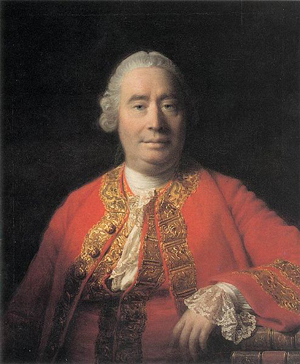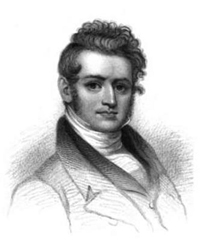
You’re welcome to send your Live Wire news tips or suggestions to [email protected].
Today’s Live Wire: Quick Links
- What If We Had Captured Bin Laden?
- Obama’s Osama Rap-Up
- Il Scott, Il Duce
- Florida Against Watchdogs
- Forced to Cheer for Her Rapist
- Arts, Education and the White House
- Whites’ Snub of Movies With Blacks
- Jascha Heifetz Plays Tchaikovsky
- Happy 300th, David Hume
- “My Own Romantic Bronx”
- Florida, Bestiality and Philip DeFranco
- Jupiter’s Great Red Spot
- A Few Good Links
![]()
Live Wire Rewinds
What If We Had Captured Bin Laden?
One of the great what-ifs of history. Jeff Greenfield in the Washington Post: “Put him on trial for mass murder in a New York federal court? Nearly 3,000had died there. But what if information about his location had been obtained through “enhanced interrogation techniques” and was ruled inadmissible? What if bin Laden acted as his own lawyer, turning the trial into a months-long denunciation of America? What if one holdout resulted in a hung jury? And anyway, the furious reaction to previous efforts to try Khalid Sheik Mohammed in Manhattan — local politicians reversing themselves, Congress denying funds for such a trial — made that idea impossible. What about an international tribunal, to drive home the fact that bin Laden’s crimes were against humanity?” Read Greenfield’s imagined consequence of having brought Osama to the United States alive.
The Osama videos:
See Also:
No introduction necessary:
 Abel Harding in the Times-Union: “Gov. Rick Scott put lawmakers on notice Saturday that he holds the final say over the state budget. “I plan on signing the budget, but I have a line-item veto,” Scott told the Times-Union after he and his wife attended the Tim Tebow Foundation Celebrity Golf Classic Breakfast in Ponte Vedra Beach. “I’m going to go through every line and make sure I know how that money is spent.” […] The governor said he would have a fairly simple question he’d ask about each line. “Does it create jobs?” he said. If it doesn’t, a veto is likely. Scott chalked up victories on a number of issues he had campaigned on during the legislative session, which concluded in the wee hours Saturday morning. His wins included performance pay for teachers, which passed in the early weeks of session and was signed into law in Jacksonville, drug testing for welfare recipients and massive reforms to the state’s Medicaid program. […] Despite promises that education would be held harmless, the governor presided over cuts to a system already widely viewed as underfunded. That could pose problems down the road, not just for Scott but for other members of his party.” The full story.
Abel Harding in the Times-Union: “Gov. Rick Scott put lawmakers on notice Saturday that he holds the final say over the state budget. “I plan on signing the budget, but I have a line-item veto,” Scott told the Times-Union after he and his wife attended the Tim Tebow Foundation Celebrity Golf Classic Breakfast in Ponte Vedra Beach. “I’m going to go through every line and make sure I know how that money is spent.” […] The governor said he would have a fairly simple question he’d ask about each line. “Does it create jobs?” he said. If it doesn’t, a veto is likely. Scott chalked up victories on a number of issues he had campaigned on during the legislative session, which concluded in the wee hours Saturday morning. His wins included performance pay for teachers, which passed in the early weeks of session and was signed into law in Jacksonville, drug testing for welfare recipients and massive reforms to the state’s Medicaid program. […] Despite promises that education would be held harmless, the governor presided over cuts to a system already widely viewed as underfunded. That could pose problems down the road, not just for Scott but for other members of his party.” The full story.
See Also:
Gary Fineout in the Herald-Tribune: “Gov. Rick Scott on Thursday signed into law a measure that would make it easier for legislative leaders to hire and fire the person who leads an office of state government auditors and analysts. And the nearly $70 billion budget that legislators will approve on Friday wipes out all dedicated funding for this office, instead folding all spending into an account controlled by leading lawmakers. […] House Speaker Dean Cannon, R-Winter Park, this week did not explain why lawmakers are changing the office with the lengthy name: the Office of Program Policy Analysis and Government Accountability, commonly called Oppaga. […] The office used to be part of the state auditor general’s office but it was pulled out nearly 20 years ago because it doesn’t do regular audits. Instead the office has issued reports that have looked at whether programs are actually saving taxpayer money as lawmakers or other state officials have promised. […] In 2009 the office raised questions about a Medicaid overhaul pushed by former Gov. Jeb Bush that transferred Medicaid patients in five counties into programs controlled by health maintenance organizations or other types of managed care providers. Earlier this year the office said that the state’s retirement system was fiscally sound despite a barrage of campaign ads by Scott last fall that suggested differently.” The full story.
See Also:
- Corporate Tax Cut Out, Privatizing Prisons and 3% Public Pension Contributions In
- Merit Pay’s Trap: When Lawmakers Are Clueless About Teachers’ Classroom Realities
Forced to Cheer for Her Rapist
From the San Francisco Chronicle: “A Texas high school cheerleader who was kicked off the squad for refusing to chant the name of a basketball player – the same athlete she said had raped her four months earlier – lost a U.S. Supreme Court appeal Monday. A federal appeals court ruled in September that the cheerleader was speaking for the school, not herself, and had no right to remain silent when called on to cheer the athlete by name. The Supreme Court denied review of the case Monday without comment. The girl, identified by her initials H.S., was 16 when she said she was raped at a party in her southeast Texas hometown of Silsbee in October 2008. She identified the assailant as Rakheem Bolton, a star on the Silsbee High School football team. Bolton ultimately pleaded guilty in September 2010 to a misdemeanor assault charge and received a suspended sentence. At a February 2009 basketball game in Huntsville, Texas, H.S. joined in leading cheers for the Silsbee team, which included Bolton. But when Bolton went to the foul line to shoot a free throw, H.S. folded her arms and was silent. H.S. said the district superintendent, his assistant and the school principal told her she had to cheer for Bolton or go home. She refused and was dismissed from the squad.” The full story.
The sentencing in 2010 from KFDM:
See Also:
Arts, Education and the White House
 From Education Week: “A presidential advisory panel today issued a report that makes the case for expanding access to arts education in schools, arguing that the arts hold great potential to bolster student engagement and academic achievement. At the same time, the report laments that, if anything, the current trend is toward the erosion of the arts on campus. The report gives special attention to the practice of arts integration, where subjects such as math, science, and language arts are integrated with teaching arts disciplines. […] The report, “Reinvesting in Arts Education: Winning America’s Future Through Creative Schools,” […] was developed over the past 18 months in response to President Obama’s arts policy campaign platform, issued during his run for the presidency. […] some arts education advocates have complained for some time about at least one policy proposal from the Obama administration itself that might make matters worse. The administration has called for consolidating the Arts in Education program at the U.S. Department of Education into a broader, competitive funding stream called Effective Teaching and Learning for a Well-Rounded Education. This is part of a larger effort to consolidate a variety of programs at the federal agency into several “teaching and learning” funds. Critics of the approach worry that it will make it much harder to ensure aid for the many programs included. That plan has not been embraced by Congress so far, but as part of the recent federal budget deal for fiscal 2011, the arts education program’s funding was reduced from $40 million to $25 million, according to Americans for the Arts. Meanwhile, total funding for the National Endowment for the Arts was reduced from $167.5 million to $155 million.” The full story.
From Education Week: “A presidential advisory panel today issued a report that makes the case for expanding access to arts education in schools, arguing that the arts hold great potential to bolster student engagement and academic achievement. At the same time, the report laments that, if anything, the current trend is toward the erosion of the arts on campus. The report gives special attention to the practice of arts integration, where subjects such as math, science, and language arts are integrated with teaching arts disciplines. […] The report, “Reinvesting in Arts Education: Winning America’s Future Through Creative Schools,” […] was developed over the past 18 months in response to President Obama’s arts policy campaign platform, issued during his run for the presidency. […] some arts education advocates have complained for some time about at least one policy proposal from the Obama administration itself that might make matters worse. The administration has called for consolidating the Arts in Education program at the U.S. Department of Education into a broader, competitive funding stream called Effective Teaching and Learning for a Well-Rounded Education. This is part of a larger effort to consolidate a variety of programs at the federal agency into several “teaching and learning” funds. Critics of the approach worry that it will make it much harder to ensure aid for the many programs included. That plan has not been embraced by Congress so far, but as part of the recent federal budget deal for fiscal 2011, the arts education program’s funding was reduced from $40 million to $25 million, according to Americans for the Arts. Meanwhile, total funding for the National Endowment for the Arts was reduced from $167.5 million to $155 million.” The full story.
See Also:
Whites’ Snub of Movies With Blacks
From Miller-McCune: “In terms of box-office grosses, this is an extraordinary week for Hollywood: The No. 1 movie in America features a mixed-race cast [“Fast Five”]. […] nonwhite actors played major roles in only two of the 30 top-grossing films of 2010. Studio executives believe white audiences prefer to see white characters, while black audiences want to see black characters, so they increasingly make films for each demographic. Are they being too cynical? Newly published research suggests the answer is, sadly, no. But it also suggests this troubling tendency may largely be the effect of the studios’ all-too-effective marketing strategies. In short, white moviegoers seem convinced that films with black stars are not made for them.” The full story.
Jascha Heifetz Plays Tchaikovsky
Carnegie Hall in Manhattan celebrated its 120th anniversary on May 5th. It’s been celebrating all year, though the gala on the 5th featured Yo Yo Ma, Emmanuel Ax, and Audra McDonald singing Ellington with the New York Philharmonic (“Solitude,” “Sophisticated Lady,” “On a Turquoise Cloud”, “It Don;t Mean a Thing If It Ain’t Got That Swing”). The Philharmonic also played Beethoven’s Triple Concerto in C Major, Op. 56, and Dvorak’s Carnival Overture–and Gershwin’s An American in Paris.
From Carnegie Hall: “120 years ago to the day—Carnegie Hall opened its doors for the first time. The orchestra at that evening’s gala performance was the Symphony Society of New York (also known as the New York Symphony), one of the two ensembles that merged in 1928 to form today’s New York Philharmonic. There are only a few places on earth that can truly be considered “magical,” and without doubt Carnegie Hall is one of them. All who have spent time here can attest that its creation was a unique moment in history. What remains amazing, even today, is that nothing in the planning for it would have led anyone to expect such an extraordinary result. In 1889, Andrew Carnegie made the bold decision to build his Music Hall “uptown,” despite critics who warned that no one would ever travel that far north in New York to go to a concert. His architect—William Burnet Tuthill—had never built a concert hall before, and was likely selected, in part, because he served on the Oratorio Society of New York’s board alongside Carnegie. Having been sent to Europe to study the halls that were considered to be the best, Tuthill proceeded to design something completely different, breaking many rules defined by today’s acousticians. There was little in Carnegie Hall’s genesis to indicate that these plans would ultimately result in the creation of the greatest concert hall in the world. But luckily for all of us who care about music, that’s exactly what happened, and Carnegie Hall would ultimately go on to play a central role in helping to transform New York into the cultural capital that we know today.”
Here’s our own celebration: Jascha Heifetz playing Tchaikovsky’s violin concerto:
- Brahms, Folk and Zeppelin as Youth Orchestra Bows in Season Finale at Flagler Auditorium
- Photo Gallery: The Flagler Youth Orchestra From May to Umbarger
- On Unexpectedly Historic Night, Jacksonville Symphony Celebrates America in Palm Coast
Happy 300th Birthday, David Hume
David Hume, one of the greatest philosophers of all times, was born May 7, 1711, or 300 years ago. Here’s Hume in three minutes:
And here’s some of what Bertrand Russell had to say about Hume, from his great History of Western Philosophy: “David Hume (1711-1776) is one of the most important among philosophers, because he developed ti its logical conclusion the empirical philosophy of Locke and Berkeley, and by making it self-consistent made it incredible. He represents, in a certain sense, a dead end: in his direction, it is impossible to go further. To refute him has been, ever since he wrote, a favourite pastime among metaphysicians. For my part I find none of their refutations convincing; nevertheless, I cannot but hope that something less sceptical than Hume’s system may be discoverable. […]

There is no reason for studying philosophy–so Hume maintains–except that, to certain temperaments, this is an agreeable way of passing the time. “In all the incidents of life we ought still to preserve our scepticism. If we believe, that fire warms, or water refreshes, ‘tis only because it costs us too much pains to think otherwise. Nay if we are philosophers, it ought only to be upon sceptical principles, and from an inclination, which we feel to be employing ourselves after that manner.” If he abandoned speculation, “I feel I should be a loser in point of pleasure; and this is the origin of my philosophy.” Hume’s philosophy, whether true or false, represents the bankruptcy of eighteenth-century reasonableness. He starts out, like Locke, with the intention of being sensible and empirical, taking nothing on trust, but seeking whatever instruction is to be obtained from experience and observation. But having a better intellect than Locke’s, a greater acuteness in analysis, and a smaller capacity for accepting comfortable inconsistencies, he arrives at the disastrous conclusion that from experience and observation nothing is to be learnt. There is no such thing as a rational belief: “If we believe that fire warms, or water refreshes, ‘tis only because it costs us too much pains to think otherwise.” We cannot help believing, but no belief can be grounded in reason. Nor can one line of action be more rational than another, since all alike are based upon irrational convictions. This last conclusion, however, Hume seems not to have drawn. Even in his most sceptical chapter, in which he sums up the conclusions of Book I, he says: “Generally speaking, the errors in religion are dangerous; those in philosophy only ridiculous.” He has no right to say this. “Dangerous” is a causal word, and a sceptic as to causation cannot know that anything is “dangerous.”
See Also:
- David Hume: The Stanford Encyclopedia of Philosophy
- David Hume and the Art of Living
- The Works of David Hume at the Online Library of Liberty
Poem: Joseph Rodman Drake’s “Bronx”

Joseph Rodman Drake (1795-1820) never had much time to flourish. He was orphaned soon after his birth in new York City. He was talented. He was a physician, but better known as a poet. He was demolished by Edgar Allen Poe, whose literary criticism had the force and subtlety of a wrecking ball. “We are not asserting too much,” Poe wrote in a characteristic broadside, while reviewing the second novel by the forgotten Edward Lytton Bulwer for Graham’s Magazine in April 1841, “when we say that every second novel since the flood has turned upon some series of hopeless efforts, either to establish legitimacy, or to prove a will, or to get possession of a great sum of money most unjustly withheld, or to find out a ragamuffin of a father, who had been much better left unfound.” When he got to Drake’s poetry, Poe wrote: “In the case of a great majority of readers the only sentiment aroused by compositions of this order is a species of vague wonder at the writer’s ingenuity, and it is this indeterminate sense of wonder which passes but too frequently current for the proper influence of the Poetic power.” Nevertheless, Drake could pull off a few beauties, “Bronx” in particular. Maybe this poem’s appeal is its contrast with contemporary preconceptions about The Bronx. Maybe it’s its simplistic innocence (“The bluefinch carroll’d in the still retreat,” or “Kissing the leaves, and sighing so to lose ’em”). Maybe it’s the beauty of lines dripping with nostalgia: “Yet I will look upon thy face again,/My own romantic Bronx, and it will be/A face more pleasant than the face of men.” He wrote “Bronx” as a commemoration of his childhood. Drake died of tuberculosis when he had just turned 25. He was buried at a cemetery on Hunts Point Avenue in The Bronx, which New York City took over in 1910 and turned into a 2.5-acre municipal parkthat has born the poet’s name since 1915.
“That year,” the city tells us, “the Bronx Society of Arts and Science installed a seven-foot marble shaft inscribed with Halleck’s words to mark Drake’s grave. The Society placed another tablet in Drake’s honor near the Lorillard Snuff Mill in the New York Botanical Garden. A 1934 survey at the site shows a stone dwelling, a metal garage, and a tool shed standing in the vicinity of the burial ground in 1934. These features were no longer in place when a major renovation was undertaken in 1953. At that time, an iron picket fence was installed around the cemetery, benches were placed along the paths and cinder sidewalks were built along the perimeter. In 1962 the timber curbs around the cemetery were replaced with concrete. Even as the surrounding neighborhood has grown more industrial, the pastoral beauty of the Joseph Rodman Drake Park endures.”
Here’s Drake’s “Bronx”:
I sat me down upon a green bank-side,
Skirting the smooth edge of a gentle river,
Whose waters seemed unwillingly to glide,
Like parting friends who linger while they sever;
Enforced to go, yet seeming still unready,
Backward they wind their way in many a wistful eddy.
Gray o’er my head the yellow-vested willow
Ruffled its hoary top in the fresh breezes,
Glancing in light, like spray on a green billow,
Or the fine frost-work which young winter freezes;
When first his power in infant pastime trying,
Congeals sad autumn’s tears on the dead branches lying.
From rocks around hung the loose ivy dangling,
And in the clefts sumach of liveliest green,
Bright ising-stars the little beach was spangling,
The gold-cup sorrel from his gauzy screen
Shone like a fairy crown, enchased and beaded,
Left on some morn, when light flashed in their eyes unheeded.
The hum-bird shook his sun-touched wings around,
The bluefinch caroll’d in the still retreat;
The antic squirrel capered on the ground
Where lichens made a carpet for his feet:
Through the transparent waves, the ruddy minkle
Shot up in glimmering sparks his red fin’s tiny twinkle.
There were dark cedars with loose mossy tresses,
White powdered dog-trees, and stiff hollies flaunting
Gaudy as rustics in their May-day dresses,
Blue pelloret from purple leaves upslanting
A modest gaze, like eyes of a young maiden
Shining beneath dropt lids the evening of her wedding.
The breeze fresh springing from the lips of morn,
Kissing the leaves, and sighing so to lose ’em,
The winding of the merry locust’s horn,
The glad spring gushing from the rock’s bare bosom:
Sweet sights, sweet sounds, all sights, all sounds excelling,
Oh! ’twas a ravishing spot formed for a poet’s dwelling.
And did I leave thy loveliness, to stand
Again in the dull world of earthly blindness?
Pained with the pressure of unfriendly hands,
Sick of smooth looks, agued with icy kindness?
Left I for this thy shades, were none intrude,
To prison wandering thought and mar sweet solitude?
Yet I will look upon thy face again,
My own romantic Bronx, and it will be
A face more pleasant than the face of men.
Thy waves are old companions, I shall see
A well-remembered form in each old tree,
And hear a voice long loved in thy wild minstrelsy.
![]()
Florida Outlaws Bestiality and More from Philip DeFranco
From Nasa’s Astronomy Picture of the Day, Jupiter’s Great Red Spot, which looks from here like an 18th century artistocrat’s bad hair day at the court of Louis XVI. As Nasa explains it: “It is a hurricane twice the size of the Earth. It has been raging at least as long as telescopes could see it, and shows no signs of slowing. It is Jupiter’s Great Red Spot, the largest swirling storm system in the Solar System. Like most astronomical phenomena, the Great Red Spot was neither predicted nor immediately understood after its discovery. Still today, details of how and why the Great Red Spot changes its shape, size, and color remain mysterious. A better understanding of the weather on Jupiter may help contribute to the better understanding of weather here on Earth. The above image is a recently completed digital enhancement of an image of Jupiter taken in 1979 by the Voyager 1 spacecraft as it zoomed by the Solar System’s largest planet. At about 117 AU from Earth, Voyager 1 is currently the most distant human made object in the universe and expected to leave the entire solar heliosheath any time now.” Click on the storm for larger view.

See Also:
- Israel’s population stands at 7.746 million on its 63rd birthday
- While Bahrain demolishes mosques, U.S. stays silent
- Nato units left 61 African migrants to die of hunger and thirst
- What will happen to us?





























Leave a Reply